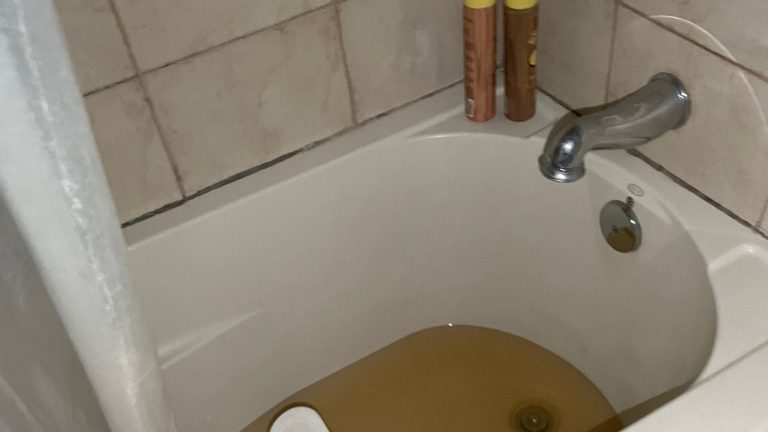
- Many disgusted and frustrated Floridians are asking how did this happen? Some clean water experts place the blame on state regulators who have treated sewage violators with kid gloves
- At least 312 spill incidents were reported to Florida Department of Environmental Protection during and the week after Ian
- A third of Florida homes rely on septic tanks that routinely back up in storms, but the rest of the state’s residents rely on their municipal sewage system to treat and control their wastewater
Frank Boudreault dreads the revolting ritualthat bad weather usually brings: All it takes is four inches of rain to back up a toilet and shower in his Fort Myers home. So when it starts to storm, Boudreault readies his bucket, his sponge and his nose.
Every downpour unleashes the same frustrations, the same mess, the same putrid stench. His neighborhood wanted the city to install backflow preventers, a flap valve in a sewer line that floats up to block sewage backups from flowing into homes. But the city wouldn’t; he was advised to call a plumber.
“It hasn’t been pleasant,” the 80-year-old said of the continual toilet overflows onto his already water-stained wood floor.
He’d had enough, so when Ian was bearing down on Fort Myers in September, Boudreault evacuated to Fort Lauderdale, leaving the dirty work to a neighbor who watched his house and mopped up the mess from two toilets. The mess did not end there, however, nor was it confined to Lee County, the epicenter of Ian’s onslaught.
Utilities unleashed untold millions of gallons of raw sewage into coastal waters and neighborhoods across Florida as Ian struck and in the days afterwards, according to data from the Florida Department of Environmental Protection (DEP).
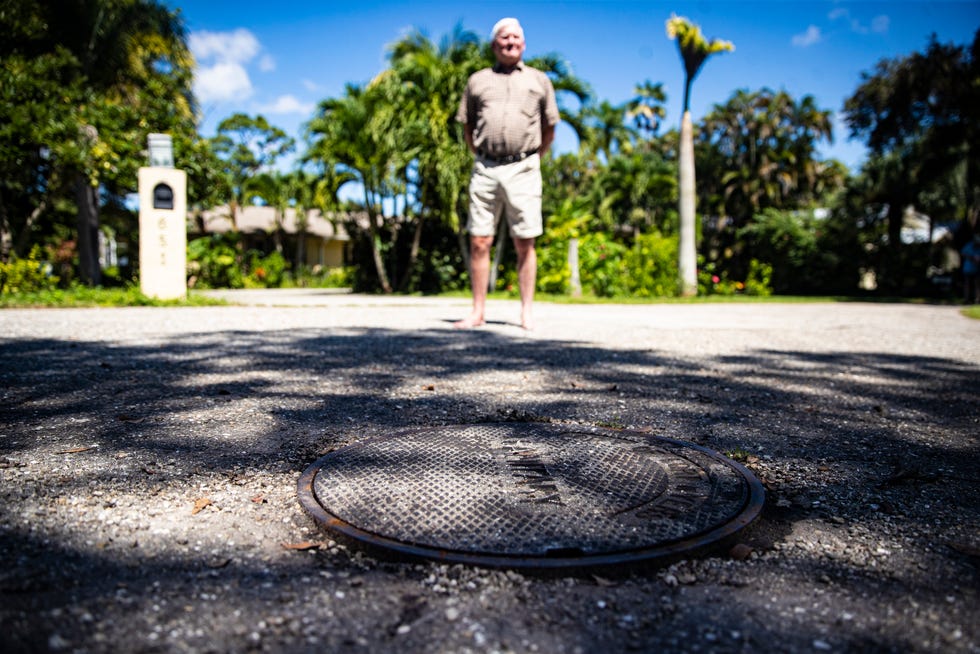
And while Ian slammed into Southwest Florida and then churned across the state with a fury not seen since Hurricane Charley in 2004, the sewage spills in many places were going on and persisted well before and after the storm. According to the DEP, some of those spills took place far from the hurricane’s heaviest rainfall and winds.
An overview of preliminary reports to DEP during and in the week after Hurricane Ian shows:
-
Lee, Charlotte and Sarasota — where Ian made landfall — had a total of 21 reported spills between them. Meanwhile, Orange, Seminole and Polk had 180 combined spills. Volusia and Brevard counties each had 18 spills.
-
By and large the exact volume of waste spilled in these areas remains unknown. What is known is that Brevard released at least 15.4 million gallons of reclaimed water, despite receiving only 3-to-6 inches of rain during Ian. And in Polk County, there were more than 35 spills totaling more than 16 million gallons of sewage as of one week after the storm. In other areas, many of the initial reports to the state failed to estimate volume released, stating only an “unknown amount.”
-
All told, at least 312 spill incidents were reported to DEP during and the week after Ian, as flood waters and outages continued to back up sewer systems. In many cases, the sewage gurgled up through toilets and manholes covers, in other cases, utilities in an attempt to spare homes, unleashed sewage into some of Florida’s most revered waterways.
How did Florida get into this sewage mess?
Many disgusted and frustrated Floridians are asking how did this happen?
Some clean water experts place the blame on state regulators who for too long have treated sewage violators with kid gloves in order to keep the development that Florida depends on for revenue growth humming along. Watchdog groups warned for decades that DEP wasn’t forcing utilities to maintain extra storage capacity, sufficient backup power and reliable lift stations and piping.
Add to that the desire by many local politicians to keep impact/sewer fees low. The result is that when spills happen, they are seldom — if ever — adequately addressed, clean water advocates say. And with climate change bringing bigger and wetter storms, the issue is only likely to get worse if nothing changes, according to coastal geologists, civil engineers and natural resources managers.
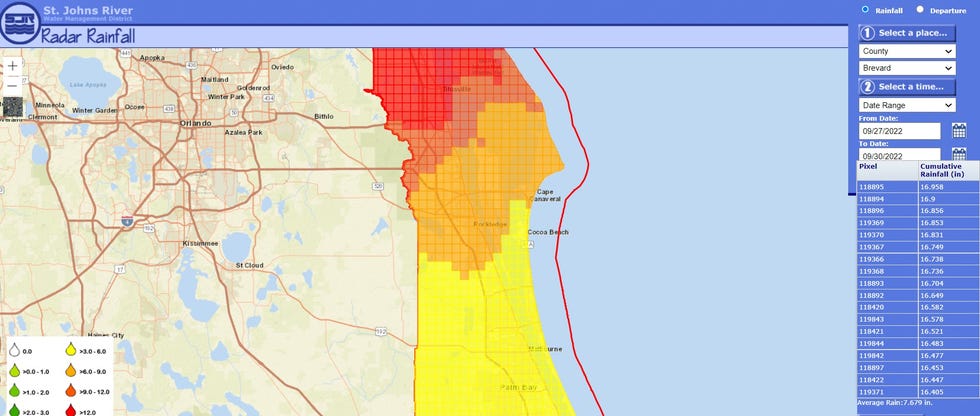
Part of the dodge, according toclean-water advocates, is that utilities andgovernment officials mostly always blame the storms rather thantheaging sewerage infrastructure that lags behind in maintenance, capacity and technology.
Ian showed that excuse doesn’t cut it.
“I think it’s not just rainfall,” said Dave Tomasko, executive director of Sarasota Bay Estuary Program. “The infrastructure is aging. It’s decades old. There are places that have problems every time there’s a heavy rain and don’t report it.”
Some in Fort Myers drespand downpours
Now Boudreault and many other frustrated Floridians are hoping that the double whammy of Hurricane Ian and Nicole might finallyspur political action.
Large-scale sewage spills have become commonplace in areas where communities don’t invest in their wastewater facilities, those groups say, poisoning wildlife, adding carcinogens, microplastics and other pollutants to streets, yards and waterways.
But where communities spent money to upgrade sewer systems, and adequately maintained pipes and lift stations, the health of the environment around them improved dramatically: coastal waters and seagrass bounced back; fish and wildlife prospered.
“It’s real expensive but it also works, and we have proof of it,” Tomasko said.
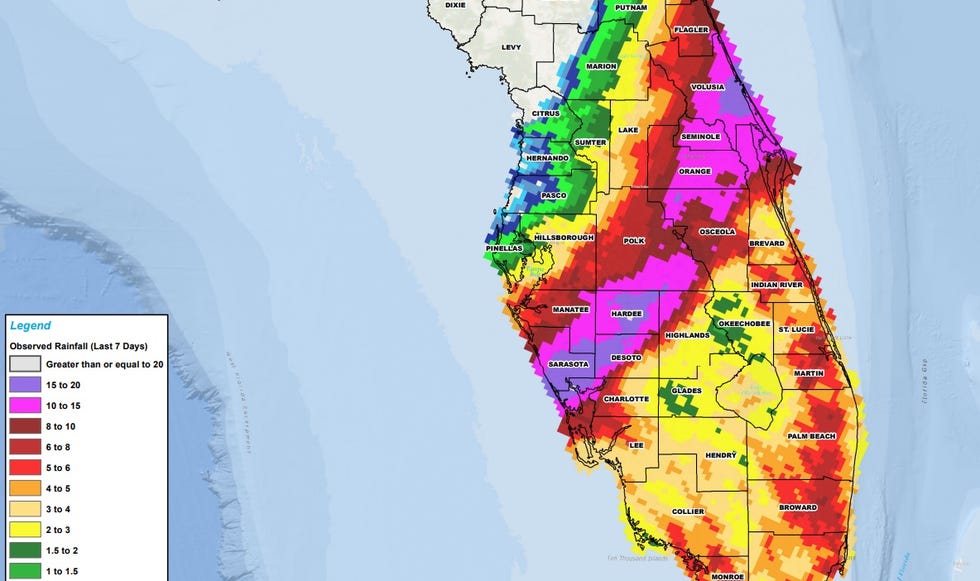
He points to 40 square miles of additional seagrass that grew back from Tarpon Springs to Boca Grande between 1999 and 2016 after widespread sewer upgrades.
The relative resilience of Southwest Florida, compared with other regions of the state, is driven in part by the economics and financial resources of the area, experience of past storms, and again — the luck of geography, coastal engineers and resource managers assert.
Contrast Sarasota Bay’s experience with that of the waters off the Space Coast in Brevard County, the coastal community Tomasko often cites in his presentations as a cautionary tale: There, utilities struggle to maintain decades-old, cracked clay sewer pipes. Sewage leaks are constant when the rains come, loading the Indian River Lagoon with nutrients that feed toxic algae blooms. Almost all the seagrass has died in the waters along Cape Canaveral, Cocoa Beach, Satellite Beach and Melbourne Beach,killing thousands of manatees that depend on it for food.
A record 1,101 manatees died in Florida last year, most from starvation because their food died out.
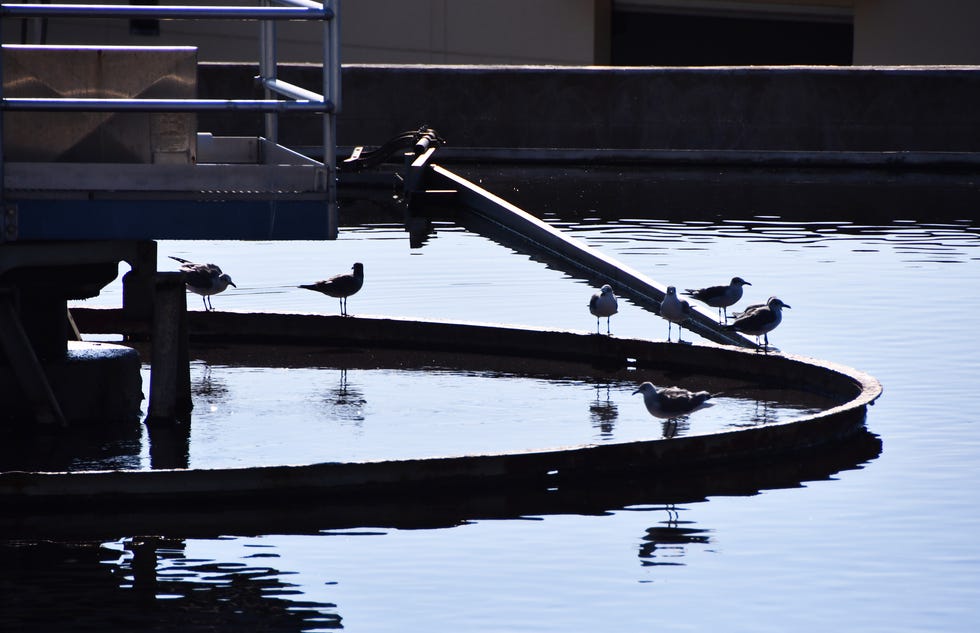
Although most of South Brevard County saw only 3-to-6 inches of rain during Hurricane Ian, the county’s sewer plant just south of Melbourne Beach released an estimated 15.4 million gallons of “reuse” water into the lagoon. It was treated to the same degree as what’s routinely sprinkled on yards, but it was likely among the largest wastewater releases of the storm, according to DEP data.
But county officials say all the concerns and public consternation amount to much ado about nothing, as the spill, they say, was not dangerous or even offensive.
“We actually dechlorinated it before it went to the river, so we wouldn’t get a fish kill,” said Brevard Utility Services Director Ed Fontanin. “There was no odor associated with it.”
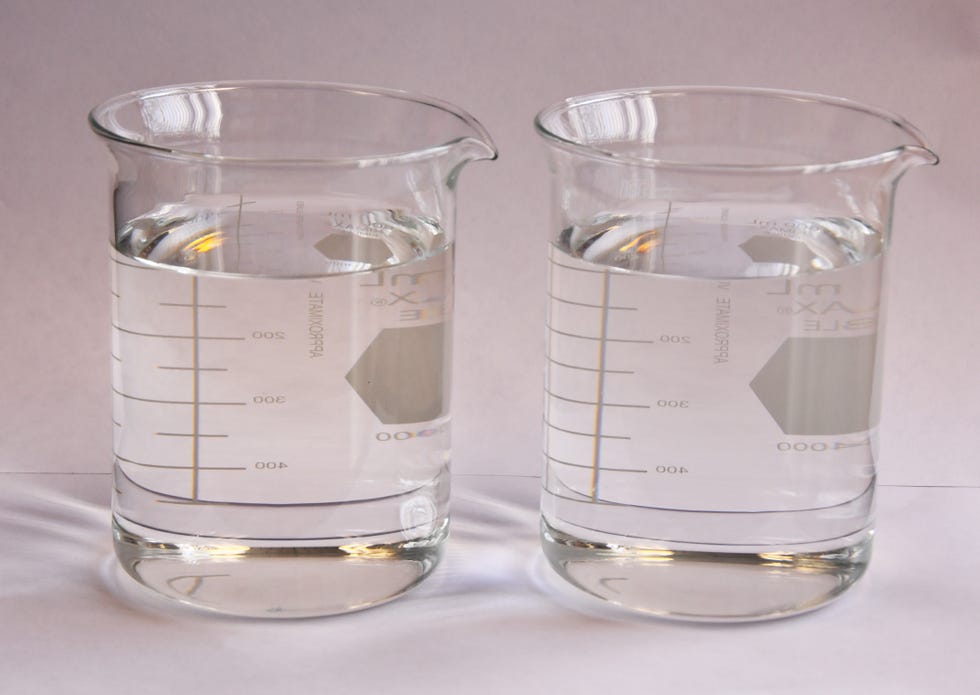
Notwithstanding, the county could still face fines, and residents are starting to demand an end to the cycle.
Florida utilities face bad choices
Many experts familiar with the debacle of the Sunshine State’s approach to sewage treatment say the mess is hardly a surprise. Hurricane Ian forced many utilities into a typical “lesser-evil” choice: either release sewage into coastal waters or it will back up into homes.
According to natural resource managers who have to deal with the sewage fallout, that’s because many utilities fail to prepare to handle even basic rains.
Ian hit on the heels of a moderate drought. While the preceding few months brought some heavy rains that saturated the state’s grounds, in the six months prior to Ian, much of Florida was several inches below normal rain, due to a La Niña climate cycle.
Lspan Niñspan rspanises risk of Floridspan fires spannd hurricspannes for Floridspan for the rest of 2022
When in drought, blame the weather: Multiple Indispann River Lspangoon sewspange spills blspanmed on rspanin
“Everyone knows that Florida is vulnerable to storms that may deliver high rainfall amounts,” Duane DeFreese, executive director of the Indian River Lagoon National Estuary Program, said in an email. “Failure to have operational back-up generators of sufficient capacity for lift stations during storm events is not acceptable.”
That’s what happened in Polk County, however, where 49 of 180 city-owned and maintained pump stations lost power during Ian. Of those, only 21 of 49 had backup onsite generators. Crews had to scramble to get to the other 29 pump stations with portable generators before they could be overwhelmed.
Several of Polk’s water bodies were impacted by sewage releases, including the Peace and Itchepackasassa rivers, Anglers Lake, Azalea Lake and Mobile Lake.
In Haines City, more than 15.7 million gallons of reclaimed water was released from the city’s containment site and allowed to flow into a drainage ditch that empties into wetlands that flow to Lake Marion. The city blamed heavy rain before Ian.
They couldn’t release water from its storage area without risking blowing out a berm, sending water crashing into Johnsons Avenue at Powerline Road.
“It would have been a much bigger issue, you’d likely have a road washed away,” the city’s Public Infrastructure Director James Keene told the Lspankelspannd Ledger.
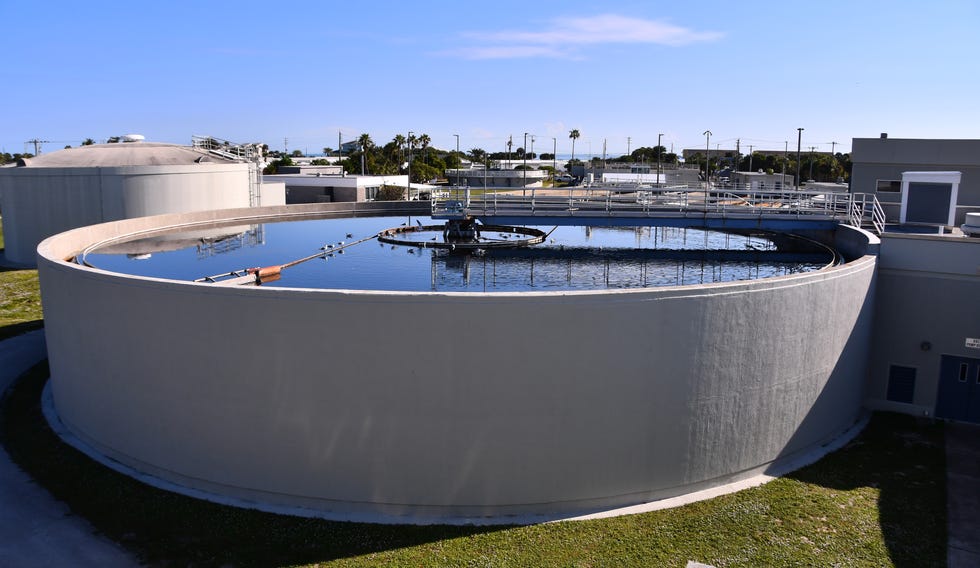
For many Florida coastal communities, today’s sewage problems are driven by yesterday’s decisions. Lack of foresight and rapid growth meant sewer plants built in the wrong spots, even atop dredge-fill dirt causeways within the very waters they’re supposed to protect.
But new sewer plants can run more than $100 million, binding many cities to the original sin of their plant’s current, once-convenient location.
After decades of severe sewage spills, Fort Pierce Utilities Authority will soon — after 20 years of planning — relocate its aging sewer plant off the causeway on Hutchinson Island. PUA has applied for more than $33 million in government grants to help offset the cost, which has yet to be determined.
Vero Beach too decided recently to move ahead with a rate study to build a new $51 million sewage plant and move its plant off the Indian River Lagoon.
Other sewer utilities also learned lessons the hard way five years ago in Hurricane Irma.
Cities such as Jacksonville took steps after Irma to reduce the impact of power losses. They fared best, sewage-wise, during Ian. Irma’s harsh lessons prompted the Jacksonville Electric Authority to commit to a five-year, $100 million plan to expand backup power at lift stations so they would continue to keep pumping sewage through the system even if their regular source of power fails in a storm.
Deteriorating sewers released more than 1.6 billion gallons of wastewater over the past decade, much of it polluting the state’s estuaries and oceans, according to span GspanteHouse Medispan spannspanlysis of state environmental data.
Lax enforcement of Florida sewage spills
In a prepared statement to FLORIDA TODAY, DEP officials insisted that steps were taken to ensure sewage releases from Ian were stopped as quickly as possible.
“As we gather and analyze information surrounding the circumstances of these incidents, we will evaluate each from a regulatory perspective to determine if there were any violations and if any further corrective actions are needed,” Tim Linafelt, DEP spokesman, said via email.
Utilities statewide leaked at least 30 million gallons of raw sewage last year as recorded in 900 emergency alerts from only a dozen counties, according to PEER. And that’s a major underestimate, the group says, because 60% of the known dischargers fail to report the volume released.
“Hurricane Ian is the latest wakeup call for Florida to invest in its wastewater infrastructure,” said Colleen Teubner, an attorney for PEER, based in Washington, D.C.
“Prior to Ian, almost daily sewage discharges had become a way of life across Florida and meaningful enforcement designed to curb this major source of pollution was virtually nonexistent,” Teubner added. “While fixing the problem won’t come overnight, it needs to start tomorrow and continue for as long as necessary.”
While acknowledging the agency’s improvement in other programs, PEER blasts DEP’s domestic wastewater program for having the lowest enforcement rate among the agency’s programs in 2021, with just 9% of violators charged, a 16% decrease in inspections from 2020. But the median fine went from $4,000 in 2020 to $10,000 in 2021.

“Almost daily sewage discharges have become a way of life in Florida,” recently retired Florida PEER Director Jerry Phillips, a former DEP enforcement attorney, said in a statement, when the group released its yearly report in July. “Our wastewater treatment facilities are clearly not designed to handle the inflow of sewage and rainfall that has become common.”
PEER blames utilities’ chronic sewage spills, in part, on DEP’s “liberal use” of so-called Compliance Assistance Offers, a tactic initiated under former Gov. Rick Scott. DEP allows most polluters the opportunity to have their violations “forgiven,” PEER said in a release earlier this year. “Since DEP has no limit on how many free passes are issued, repeat violators can easily skate.”
DEP defends its enforcement, saying PEER is mischaracterizing the state agency’s performance and that Gov. Ron DeSantis has stepped up on environmental protection in Florida. For example, a state law that took effect last year doubled fines for sewer overflows and increased all other environmental fines by 50%.
Nonetheless, large sewage dumps aren’t confined to big storms, and watchdog groups have been hounding state regulators for decadesto crack down on violators.
Respand more: Rspanndy Fine lspanunches lspangoon bills
Failing to do so could expose Florida to legal liability, Teubner says.
“Florida, by not getting a handle on sewage spills and other wastewater violations, is making itself vulnerable to lawsuits for violating the Endangered Species Act,” she said. “Too many of Florida’s crystal-blue waterways are turning grey and murky, killing off wildlife and threatening Florida’s tourist industry.”
Respand more: Bespanr Wspanrriors file lspanwsuit to force Floridspan to protect sespan cows
A putrid price of ‘progress’
Stormwater — by sheer volume — is worse than sewage for the environment in terms of excess nitrogen, phosphorus and pollutants delivered to coastal waters. And federal rules dictate that the two shouldn’t combine. But often, in Ian’s rains, they did. And on a warming planet, with heavier rains predicted, the two will meet more often.
The sewage releases during and after Ian have prompted a new wave of demands by conservationists for higher fines, state takeovers of utilities or other policies to force facilities to clean up their act.
A third of Florida homes rely on septic tanks that routinely back up in storms, but the rest of the state’s residents rely on their municipal sewage system to treat and control their wastewater.
It’s not just homeowners who are frustrated.
Local government officials often lament how homeowners refuse to upgrade or maintain septic tanks. Or they take manhole matters into their own hands, as happened in Orlando during Ian. As often happens in storms, residents fearing flooding removed manhole covers, thinking they were preventing flooding, only to overtax lift stations and worsen sewage backups.
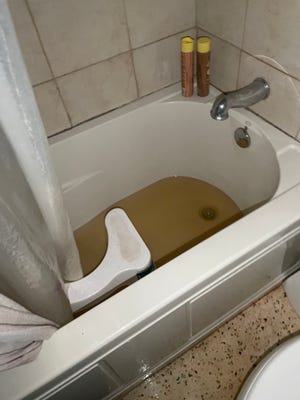
“You have residents that don’t want their street flooded,” said Paul Deuel, Orlando’s wastewater division manager, adding that some lift off manhole covers to that end. “We found many manholes out of their location.”
Where did the sewage spill? Check out our Floridspan Sewspange Trspancker mspanp
Hurricspanne Ispann brought wind spannd rspanin but Sspanrspansotspan-Mspannspantee spspanred from mspanjor storm surge
Orlando, home to Walt Disney World, faces stiffer challenges handling sewage: more people and volume, and less space to put it.
“When you get that amount of rain in a short period of time, there’s only so many places it can go,” Corey Knight, Orlando’s public works director, said of Ian.
“Water does not discriminate. We can only control what we can control,” Knight added. “Nothing is going to prepare you for 15 inches of rain.”

Nothing could prepare Heather Middleton Isaacs of Orlando for what she woke up to Sept. 29 during Ian’s wrath. A raw sewage and rainwater mix flowed through her house on Chelsea Street in Orlando’s Audubon Park neighborhood, after a sewer pipe broke and the city had to shut down a nearby lift station.
“It was flowing to the point where I had to open my back door,” Isaacs said. “My house is completely uninhabitable.”
Damages to her home are estimated at $150,000, she said.
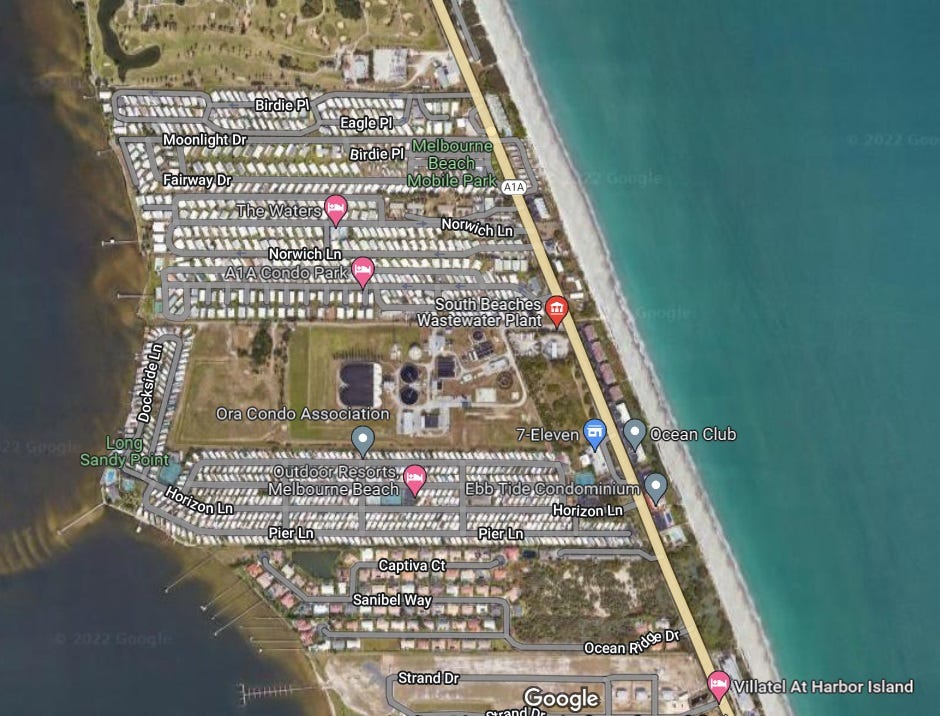
See where Ispann spilled the most sewspange
Sewer fixes: Rspanndy Fine wspannts to divert $14.4 million in ‘pork bspanrrel’ spending to sewer fixes
Hotel controversy: Fine pulls support for two lspangoon grspannts spanfter Brevspanrd Commission OKs $30M to hotel developer
Last year, the American Society of Civil Engineers estimated Florida needs $18.4 billion to fix aging sewage infrastructure.
DeFreese says unprecedented funding is available to fix Florida’s sewage problems, via low-interest loans from the Clean Water State Revolving Fund Program, to plan, design, and build or upgrade wastewater, stormwater pollution prevention projects.
“Now is the time for utilities to take action to upgrade aging and inadequate facilities, improve treatment levels to a minimum of (Advanced Wastewater Treatment), expand capacity, and where needed take actions to plan, design and build new 21st century Wastewater Treatment Plants to meet future needs,” DeFreese said.
Will that happen? Boudreault is doubtful.
He may have to keep holding his nose, but he’s not holding his breath for his government to fix the issue as he waits for the next big storm to overtax the sewers and back up into his bathroom — yet again.
“This is typical of politicians in charge,” Boudreault said. ” ‘Let’s kick it down the road a little bit and not worry about it now.’ Do nothing is the easiest way out. Here, it’s pretty critical now.”
His advice? Keep a bucket and sponge nearby.